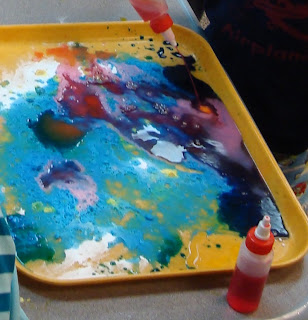This is part of an occasional series on food allergies for classroom teachers. I hope to eventually put the posts all together for a presentation at a conference next year, but I’m having trouble deciding what teachers need to know. As a parent of food allergic children, I know a lot more than teachers should be expected to remember or take care of. I need to find the right balance of information. I’d love to have specific feedback on these posts in order to make them accurate, understandable, and helpful. Other topics will include: Food Allergy Basics, Preventing Food Allergy Emergencies, and Instructional Implications for Food-Allergic Students. Thanks for your input!
Emergency Action Planning
Every child with an emergency medication, including inhalers, EpiPens, and insulin, should have an emergency action plan that you have reviewed and practiced. Anyone who will be responsible for the child’s well-being needs to be made aware of the plan and where to find it. Emergency action plan forms can be found in many places, including The Food Allergy and Anaphylaxis Network, and Safety Sack.
What should happen during an allergic reaction?
Follow the child’s action plan. Here are the steps that are part of most allergy action plans:
1. Assess severity: For breathing difficulty administer EpiPen and call 911. Remove the allergen (see next step) while waiting for ambulance if possible. If there is no immediate distress go directly to the next step.
2. Remove allergen: If the contact was a spill, remove clothing and wash any areas touched by the allergen. If allergen was ingested, be prepared for vomiting.
3. Antihistamine: If action plan indicates it, administer an antihistamine (such as Benedryl or Zyrtec). If possible, call a guardian to let them know what is happening, never leaving child alone. If you have to choose between calling a guardian and staying with the child, stay with the child so you can monitor for signs of anaphylaxis.
4. Respiratory Distress: If respiratory distress develops administer EpiPen and call 911. Administer second EpiPen if paramedics have not arrived and breathing does not improve or gets worse after easing for awhile.
5. Call Guardian: Once paramedics have control of the situation, call a guardian. If an extra adult is present the guardian may be called sooner.
After the EpiPen has been administered a child should have constant supervision until the paramedics or a guardian arrives. Allergic reactions can have a rebound effect several hours after the initial incident. Even without a rebound reaction, an EpiPen will make a person jittery and sometimes emotional.
While there are some parents who want their child to stay in school after an EpiPen has been administered, this is not recommended. They will not be able to focus while the medicine is in their system and they can’t be properly monitored for a delayed reaction. If a guardian does not want their child to go to the hospital, insist that the child be taken home and supervised carefully.
Where should we keep the EpiPens and antihistamines?
Ideally, medications should be stored where they are most likely to be needed AND where they are most likely to be found. My children have EpiPens in their classrooms (older children should carry them on their persons), in the cafeteria, and in the office. Antihistamines are not emergency medications and can be kept in the office in most cases. At my children’s school, non-emergency medications MUST be kept in the office.
At the nursery school where I work we keep medications in each classroom’s backpack, which goes with us whenever we leave the room (even to go outside) and also contains emergency contact information for each child. We have high hooks inside and outside to keep the backpacks out of harm’s way.











